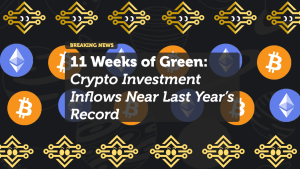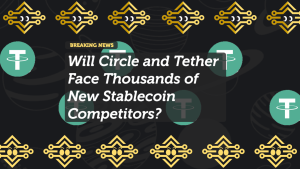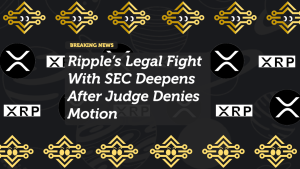
Trump’s Cryptocurrency Reserve Proposal: XRP, Solana, and Cardano Included
Former U.S. President Donald Trump has sparked a heated debate by suggesting that a U.S. strategic cryptocurrency reserve should include altcoins like XRP, Solana (SOL), and Cardano (ADA) in addition to Bitcoin. This proposal, announced on March 2, 2025, triggered major price spikes, with XRP jumping 35% and Cardano surging over 60% within hours.
However, not everyone is convinced. While Trump’s crypto-friendly stance excites investors, some experts argue that Bitcoin remains the only asset suitable for a national reserve.
Breaking Down Trump’s Crypto Reserve Proposal
What Was Announced?
During a social media post and subsequent remarks at a press event, Trump outlined his vision for a U.S. government-backed cryptocurrency reserve. The reserve would:
- Utilize existing government-seized crypto assets (such as those from Silk Road forfeitures).
- Include Bitcoin as a foundational asset while exploring the addition of major altcoins.
- Position the U.S. as a leader in digital assets and blockchain innovation.
Which Cryptocurrencies Are Included?
Trump’s proposal named:
✅ Bitcoin (BTC) – Already held by the U.S. government in large quantities.
✅ Ethereum (ETH) – A major player in DeFi and smart contracts.
✅ XRP – Favored for cross-border payments and remittances.
✅ Solana (SOL) – Known for high-speed transactions and NFT adoption.
✅ Cardano (ADA) – Recognized for its research-driven blockchain development.
Market Reaction: Altcoins Surge
Trump’s announcement immediately impacted the crypto market, with significant price movements:
- XRP surged over 35%, trading above $2.10 at its peak.
- Cardano (ADA) skyrocketed by more than 60%, reaching $0.86.
- Solana (SOL) climbed 25%, surpassing $175 for the first time in weeks.
The rally reflected renewed investor confidence, with traders betting on a more favorable regulatory environment under Trump.
Why XRP, Solana, and Cardano?
Trump’s inclusion of these altcoins raised eyebrows. Unlike Bitcoin, which is widely regarded as “digital gold,” these cryptocurrencies serve different functions:
- XRP: Used for fast, low-cost cross-border payments, often seen as an alternative to the traditional banking system.
- Solana: Known for its high-speed blockchain, making it ideal for NFTs, gaming, and DeFi applications.
- Cardano: Aims to provide scalable and sustainable blockchain solutions with a strong research focus.
Strategic Relevance vs. Speculative Picks
Some analysts believe these picks align with strategic use cases, while others think they are driven by market speculation rather than economic necessity.
Industry Reactions: Mixed Responses
The proposal sparked polarized views among industry leaders:
Supporters See a Positive Shift
Brad Garlinghouse (Ripple CEO): “XRP’s inclusion in the reserve would solidify its role in global finance.”
Michael Saylor (MicroStrategy): “Crypto reserves are smart, but Bitcoin should dominate the holdings.”
Anthony Pompliano (Investor): “This could be a turning point for U.S. crypto policy.”
Skeptics Question the Move
Vitalik Buterin (Ethereum Co-Founder): “Governments shouldn’t be picking winners in crypto markets.”
Economist Nouriel Roubini: “This is just another attempt to pump altcoins. The U.S. needs hard assets, not speculative tokens.”
Regulatory Experts: “Will Congress support this? Unclear.”
Key Concerns & Challenges
1. Will Congress Approve a Crypto Reserve?
A formal reserve requires legislative backing. Some lawmakers support blockchain innovation, while others remain skeptical of crypto’s volatility.
2. Bitcoin Maximalists Push Back
Many in the Bitcoin community believe BTC is the only crypto suitable for a national reserve, arguing that altcoins are too centralized or prone to manipulation.
3. Legal & Regulatory Hurdles
- Will the SEC classify these assets as securities?
- How will the U.S. Treasury manage digital reserves?
- Can this coexist with traditional financial systems?
The Future: What Happens Next?
Short-Term: Expect further price volatility as traders react to Trump’s crypto-friendly policies.
Mid-Term: If this proposal gains traction, XRP, Solana, and Cardano could see increased institutional interest.
Long-Term: The success of a U.S. crypto reserve depends on regulatory approvals, economic strategy, and adoption.
Final Thoughts: Boom or Just Hype?
Trump’s crypto reserve proposal is one of the biggest signals of mainstream adoption to date, but it comes with significant debate. While Bitcoin’s inclusion seems logical, the selection of XRP, Solana, and Cardano raises questions about strategic necessity versus market speculation.
If the U.S. moves forward with a regulated, structured approach, this could be a historic moment for crypto. If not, it may just be another political headline that fuels temporary price surges without long-term impact.
What do you think? Should the U.S. government hold altcoins in its crypto reserves, or should Bitcoin remain the sole focus? Let us know your thoughts.
















